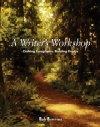 |  A Writer's Workshop: Crafting Paragraphs, Building Essays Bob Brannan,
Johnson County Community College
Commas and Other Punctuation
Summary1.Punctuation--primarily commas but including other marks such as semicolons, colons, dashes, and parentheses--is essential for sorting our ideas into easily understood units of thought. |
 |  |  | 2.Commas are the most-used punctuation mark, after end punctuation such as periods. The Big Three categories for comma usage are: 1) Commas that introduce a main clause; 2) Commas that mark non-essential word groups; 3) Commas that divide main clauses. |
 |  |  | 3.Commas can also be used when we have: items in a series, coordinate adjectives, contrasting expressions, misleading expressions, and numbers, addresses, place names, dates and direct address. |
 |  |  | 4.Commas are often used unnecessarily. Avoid using commas when they would separate a subject from its verb or object, or when they would separate compound constructions. |
 |  |  | 5.We use semicolons in two ways: to divide (or link) main clauses without using a coordinating conjunction (and/but) and to separate word groups in a series that contains commas. |
 |  |  | 6.The colon has three primary uses: to begin a formal list (as it does in this sentence), to separate closely related main clauses (as does the semicolon), and to mark a formal appositive (non-essential describing word or phrase) at the end of a sentence. |
 |  |  | 7.The dash is a versatile punctuation mark that can help writers in several ways. To list just a few examples, a dash can: set off a series that begins a sentence, indicate an abrupt break in thought within a sentence, or emphasize a word or word group at the end of a sentence. |
 |  |  | 8.Parentheses are generally used to add non-essential material to a main clause. |
 |  |  | 9.Quotation marks are used primarily to enclose spoken and written words. |
 |  |  | 10.Apostrophes have two primary functions: they mark the omission of letters in contractions and show ownership. |
 |  |  | 11.Capitalize proper names--specific, unique individuals or things--and words derived from them. |
 |  |  | 12.Hyphens are used to join words and show where words are divided into syllables. |
 |  |  | 13.Underlining and italicizing serve to draw the reader's attention to certain words or phrases. The names of books, plays and long poems should be italicized. |
|



 2002 McGraw-Hill Higher Education
2002 McGraw-Hill Higher Education